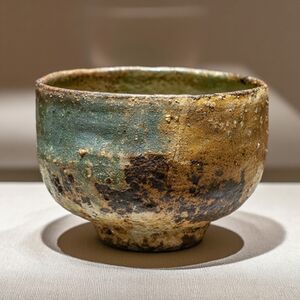Mino ware

Mino ware (美濃焼, Mino-yaki) is a traditional style of Japanese pottery that originates from the Mino Province, which corresponds to the southern part of Gifu Prefecture in central Japan. It is renowned for its rich history, diverse styles, and influential role in the development of Japanese ceramics.
History
Mino ware dates back to the Momoyama period (late 16th century) and flourished during the Edo period. It evolved as a major ceramic production center due to its favorable geographic location and access to high-quality clay and resources.
The region became famous for producing ceramics that balanced both practicality and artistic beauty. Over time, Mino ware gained recognition not only domestically but also internationally, especially for tea ceremony wares.
Characteristics
Mino ware is known for its wide variety of styles and glazes. Its versatility and creativity have made it a cornerstone of Japanese pottery. The primary features include:
- Clay: Typically light-colored, fine-grained clay sourced locally.
- Glazing: Diverse glazing techniques and vibrant colors, often featuring earthy tones and soft textures.
- Shapes: Practical forms for everyday use, including tea bowls, plates, jars, and sake vessels.
Major Styles
Several distinct styles have emerged under the umbrella of Mino ware. The four most famous are collectively known as the Mino Sōshiki (美濃宗四器):
- Shino ware (志野焼)
- Known for its thick white feldspar glaze, often decorated with red or black brushwork.
- It was among the first high-fired glazed wares in Japan.
- Oribe ware (織部焼)
- Characterized by asymmetrical shapes and green copper glaze with freehand painted designs.
- Often bold and innovative in design.
- Tobi-kanna (飛鉋) or Tobi-Oribe
- Features carved or chiseled patterns under a glaze, creating a textured surface.
- Kizeto or Yellow Oribe (黄瀬戸)
- Known for its distinctive yellow glaze and simpler, more rustic aesthetic.
Cultural Significance
Mino ware holds a significant place in the Japanese tea ceremony (茶道, sadō) tradition. Many tea masters have prized its rustic yet refined qualities for use in tea bowls (茶碗, chawan).
Today Mino ware continues to be produced in Gifu Prefecture, blending traditional techniques with contemporary artistic approaches. It remains one of Japan's most prolific and respected pottery styles.
Production Area
The main production centers for Mino ware are in and around Tajimi, Toki, and Mizunami cities in Gifu Prefecture. These areas are collectively referred to as the Mino ceramic basin.